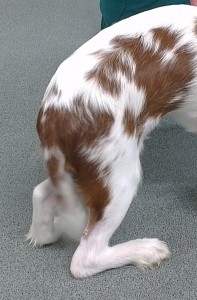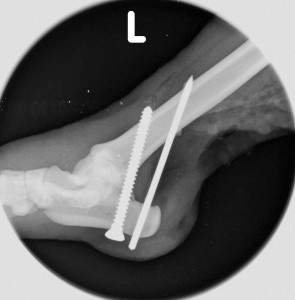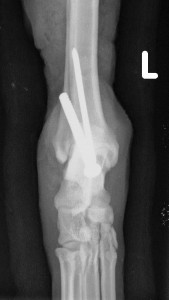Achilles tendon problems are referred to us at West Midlands Veterinary Referrals relatively frequently. The Achilles tendon functions, along with the muscles that contribute to it, to extend the ankle. This keeps the “heel” off the ground and allows the dog or cat to walk on tip-toe.
The Achilles tendon can be damaged through trauma, or the tendon's insertion at the ankle can weaken without known trauma.
We saw a recent case where a dog played in water and suffered a lacerated Achilles tendon caused by submerged glass or sheet metal. If the Achilles tendon is severed, it can’t be pulled tight, so the ankle collapses. These dogs present walking “plantigrade” as if they were walking on their palms rather like bears, gorillas or us, rather than walking up on their toes as they should be. If the tendon injury is relatively fresh, it can often be repaired with sutures.
In some large breed dogs, often Dobermans or Labrador retrievers, the insertion of the Achilles tendon on the calcaneal process, the “heel” of the ankle can weaken. These dogs often present with palpably thickened Achilles tendons. This disease is called enthesiopathy of the Achilles tendon.
Whether the tendon is weakened by laceration or enthesiopathy, it must be supported while it heals. This is usually achieved with a combination of screw(s) holding the ankle in extension and external extension splints/casts. The support is continued for several weeks. The screws and the cast are then sequentially removed and the prognosis is generally pretty good for return to function. The joint takes a few weeks to regain its range of flexion, and the full extent of flexion will inevitably be somewhat reduced even in the long term. This is rarely of any great consequence. Occasionally insufficient healing occurs and the function is poor, and in this case salvage with an ankle fusion procedure (see separate article) can usually give very satisfactory function.





